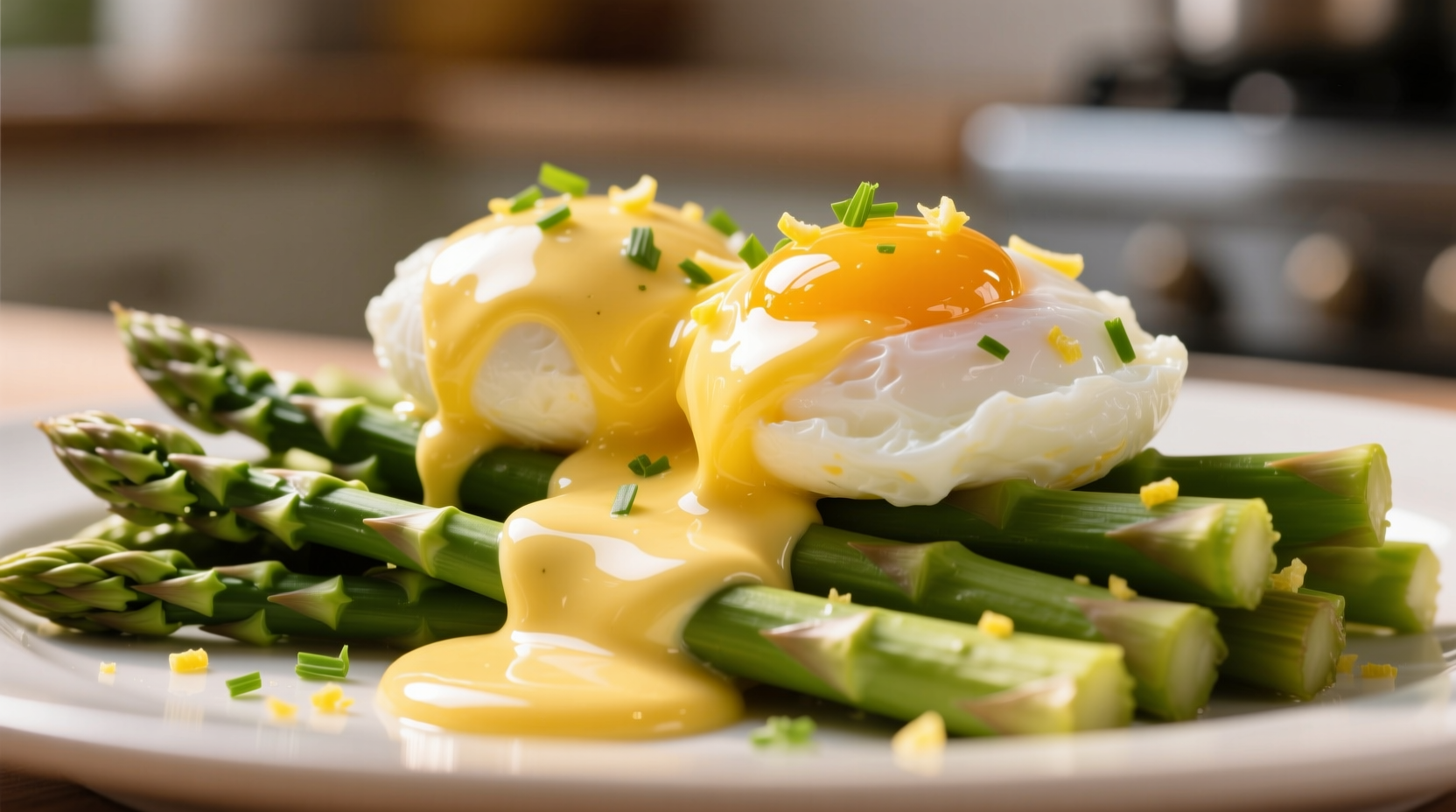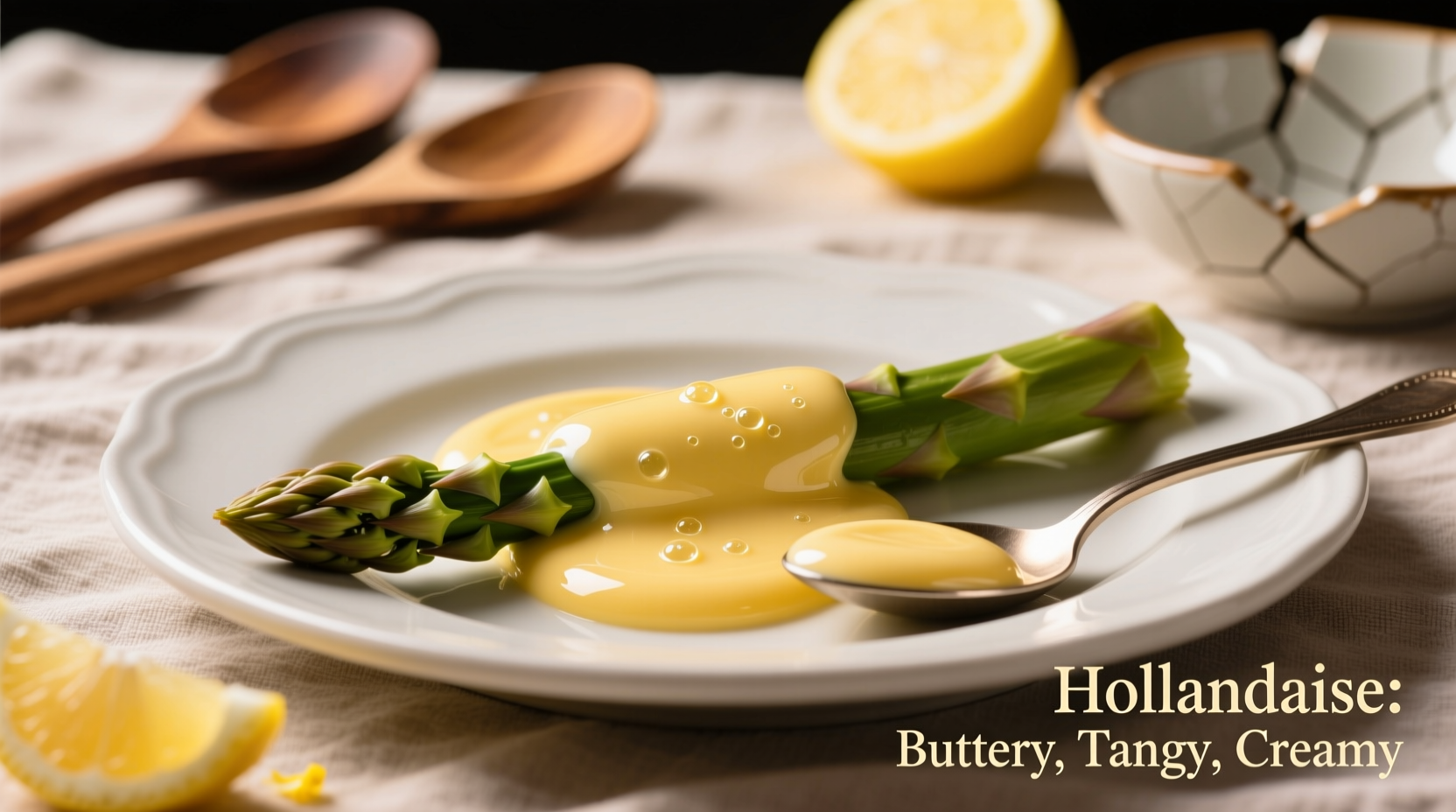Ever wonder what makes hollandaise sauce so special on your brunch plate? That golden, creamy topping isn't just butter and eggs—it's a carefully balanced flavor experience that defines classic brunch dishes. Understanding exactly what hollandaise tastes like helps you appreciate why it's been a French culinary staple for centuries and how to identify perfectly made sauce versus a flawed version.
The Core Flavor Experience of Hollandaise
When properly prepared, hollandaise delivers a complex yet harmonious flavor profile that engages multiple senses simultaneously. The dominant characteristic is a rich buttery flavor that coats your palate without feeling greasy. This richness comes from the high-quality clarified butter that forms the sauce's foundation.
Complementing this richness is a subtle tanginess from freshly squeezed lemon juice, which cuts through the fat and prevents the sauce from tasting heavy. The egg yolks contribute a creamy, almost custard-like quality with a faint eggy note that should never be overpowering. A whisper of cayenne pepper or white pepper adds just enough warmth to elevate the other flavors without creating noticeable heat.
Texture plays a crucial role in hollandaise's taste perception. The ideal sauce has a silky, pourable consistency that feels luxurious in your mouth. Temperature matters too—served warm (not hot), hollandaise releases its full flavor spectrum, while chilled versions mute the delicate balance.
What Creates Hollandaise's Distinctive Taste?
The magic of hollandaise lies in its simple ingredients working in perfect harmony. Let's break down how each component contributes to the final flavor:
- Egg yolks—Provide emulsification and a rich, slightly sweet base note. They create the sauce's custard-like mouthfeel without tasting "eggy" when properly cooked
- Clarified butter—Delivers pure butterfat flavor without milk solids that could burn. This is where the dominant richness comes from
- Lemon juice—Adds necessary acidity to balance the fat, creating that signature bright finish
- Seasonings—Typically just salt and a pinch of cayenne, which enhance without dominating
The emulsification process itself transforms these ingredients. As the warm butter incorporates into the egg yolk mixture, it creates thousands of tiny fat droplets suspended in liquid—a process that fundamentally changes how our taste receptors perceive the flavors, making hollandaise taste lighter than its ingredients suggest.
| Sauce Component | Flavor Contribution | Proper Balance Indicator |
|---|---|---|
| Egg yolks | Creamy richness, slight sweetness | No cooked egg flavor, smooth texture |
| Clarified butter | Pure butterfat richness | No greasy mouthfeel, golden color |
| Lemon juice | Bright acidity, freshness | Tang enhances rather than dominates |
| Seasonings | Subtle warmth, flavor enhancement | Pepper warmth felt but not tasted |
Hollandaise Through Time: A Flavor Evolution
Understanding hollandaise's taste requires some historical context. While often attributed to French cuisine, the sauce's name suggests Dutch origins ( Hollande being French for Holland). Food historians believe it evolved from earlier butter-based sauces served with fish in the Netherlands.
By the 17th century, French chefs had adopted and refined the recipe, incorporating it into what would become known as the five mother sauces of French cuisine. Auguste Escoffier's 1903 Le Guide Culinaire standardized the modern recipe, emphasizing the precise temperature control needed to achieve the perfect emulsion and flavor balance.
Over time, regional variations emerged—some chefs adding tarragon for a béarnaise variation, others adjusting the lemon-to-butter ratio based on local preferences. Despite these adaptations, the core flavor profile has remained remarkably consistent: that signature balance of rich, tangy, and creamy elements that defines authentic hollandaise.
How Hollandaise Compares to Similar Sauces
To truly understand hollandaise's unique taste, it helps to compare it with related sauces:
- Béarnaise—Essentially hollandaise with added tarragon, shallots, and vinegar. The herbal notes make it more complex and less butter-forward
- Mayonnaise—Also an egg yolk emulsion, but cold-temperature preparation creates a completely different texture and flavor profile without the cooked richness
- Maltaise—Hollandaise with orange juice instead of lemon, creating a sweeter, fruitier profile better suited for fish
- Aioli—Garlic-infused mayonnaise with a sharp, pungent flavor profile that contrasts with hollandaise's subtlety
The key differentiator is hollandaise's warm temperature and cooked preparation, which creates a richer, more complex flavor than cold emulsions while maintaining a delicate balance that doesn't overpower the dish it accompanies.
When Hollandaise Works Best (and When It Doesn't)
Hollandaise shines in specific culinary contexts where its flavor profile complements rather than competes with other elements. Understanding these boundaries helps explain why it tastes perfect in some applications but falls flat in others:
Ideal pairings where hollandaise tastes exceptional:
- Eggs Benedict—The sauce's richness complements poached eggs while the acidity cuts through the ham
- Steamed asparagus—The buttery notes enhance the vegetable's natural sweetness
- Fish dishes—Especially delicate white fish where the sauce adds richness without overwhelming
- Roasted vegetables—Brussels sprouts or artichokes benefit from the sauce's creamy texture
Situations where hollandaise's flavor becomes problematic:
- With strongly flavored meats—Overpowers dishes with bold seasonings or smoky flavors
- At incorrect temperatures—Too hot causes separation; too cold mutes flavors
- With overly acidic components—Competes with tomatoes or vinegar-based elements
- When made with low-quality butter—Imparts off-flavors that dominate the delicate balance

Identifying Perfectly Made Hollandaise
As a home cook or diner, knowing what properly executed hollandaise should taste like helps you distinguish quality preparations. Here's what to look for:
Flavor indicators of excellent hollandaise:
- A balanced interplay of richness and acidity—you should notice both elements but neither dominates
- No detectable raw egg flavor—proper cooking eliminates any eggy taste
- A clean butter flavor without any hint of burnt or browned notes
- Subtle warmth from pepper that enhances rather than burns
- A finish that's clean and refreshing rather than heavy or greasy
Warning signs of flawed hollandaise:
- Overpowering lemon flavor—indicates too much acid or poor balance
- Eggy or scrambled texture—suggests temperature issues during preparation
- Separation or oiliness—means the emulsion has broken
- Bitter or burnt notes—butter was overheated
- Excessive saltiness—poor seasoning balance
Professional chefs often use the "nap" test to check hollandaise quality—when properly made, the sauce should coat the back of a spoon thickly enough that when you draw your finger through it, the line holds its shape without running. This visual indicator correlates directly with the ideal flavor and texture experience.
Bringing Hollandaise Flavor to Your Kitchen
Whether you're ordering brunch or making hollandaise at home, understanding its flavor profile helps you appreciate this classic sauce. When dining out, pay attention to how the sauce interacts with other elements on your plate—does it enhance the dish or feel like an afterthought? At home, focus on ingredient quality (especially fresh lemon juice and good butter) and temperature control to achieve that perfect balance of richness and brightness.
Remember that hollandaise's magic lies in its simplicity and balance. The best versions don't shout with flavor but instead create a harmonious experience where no single element dominates. This delicate equilibrium is what has kept hollandaise a beloved culinary staple for centuries and what makes it such a special addition to the right dish.











 浙公网安备
33010002000092号
浙公网安备
33010002000092号 浙B2-20120091-4
浙B2-20120091-4